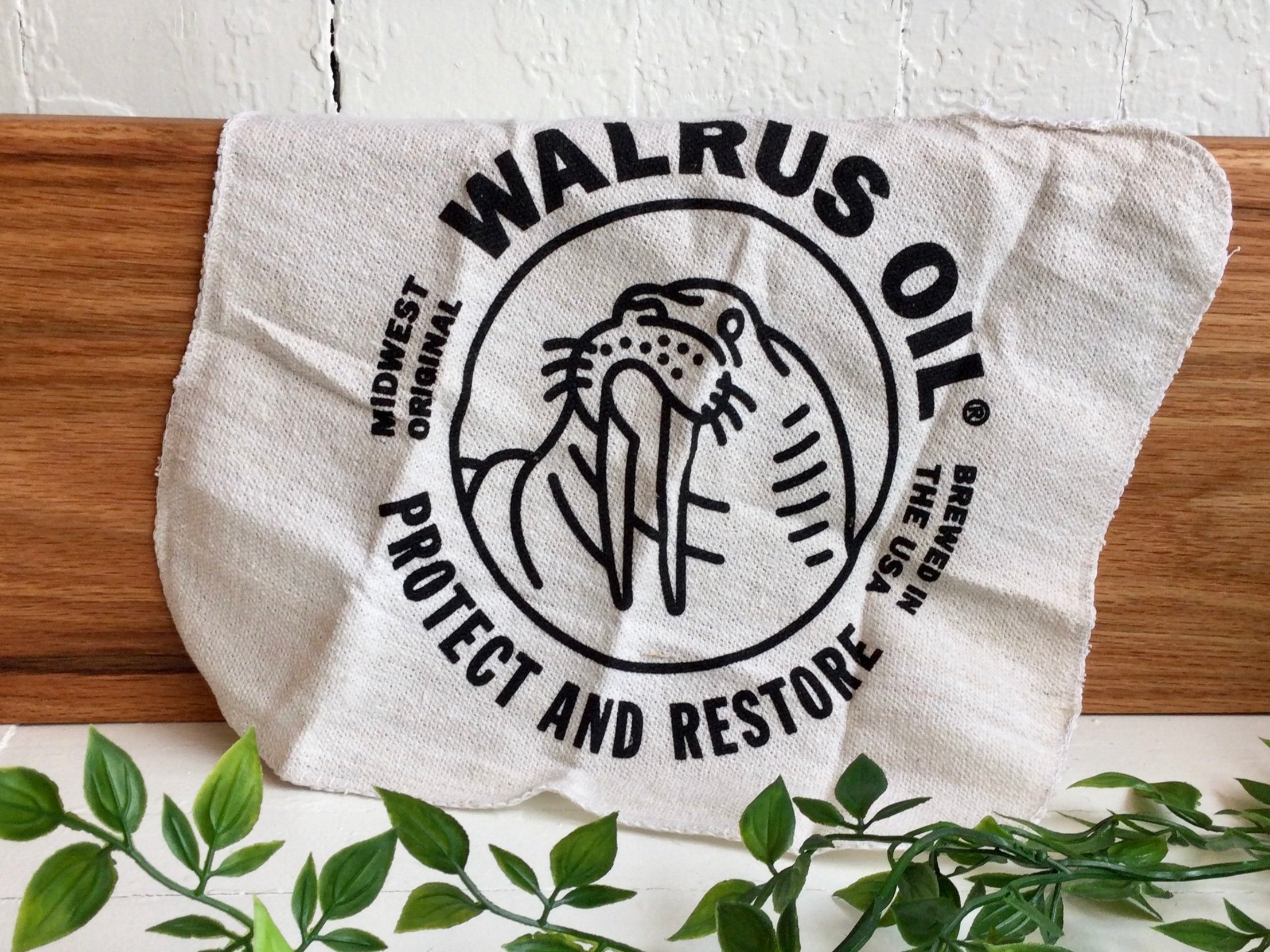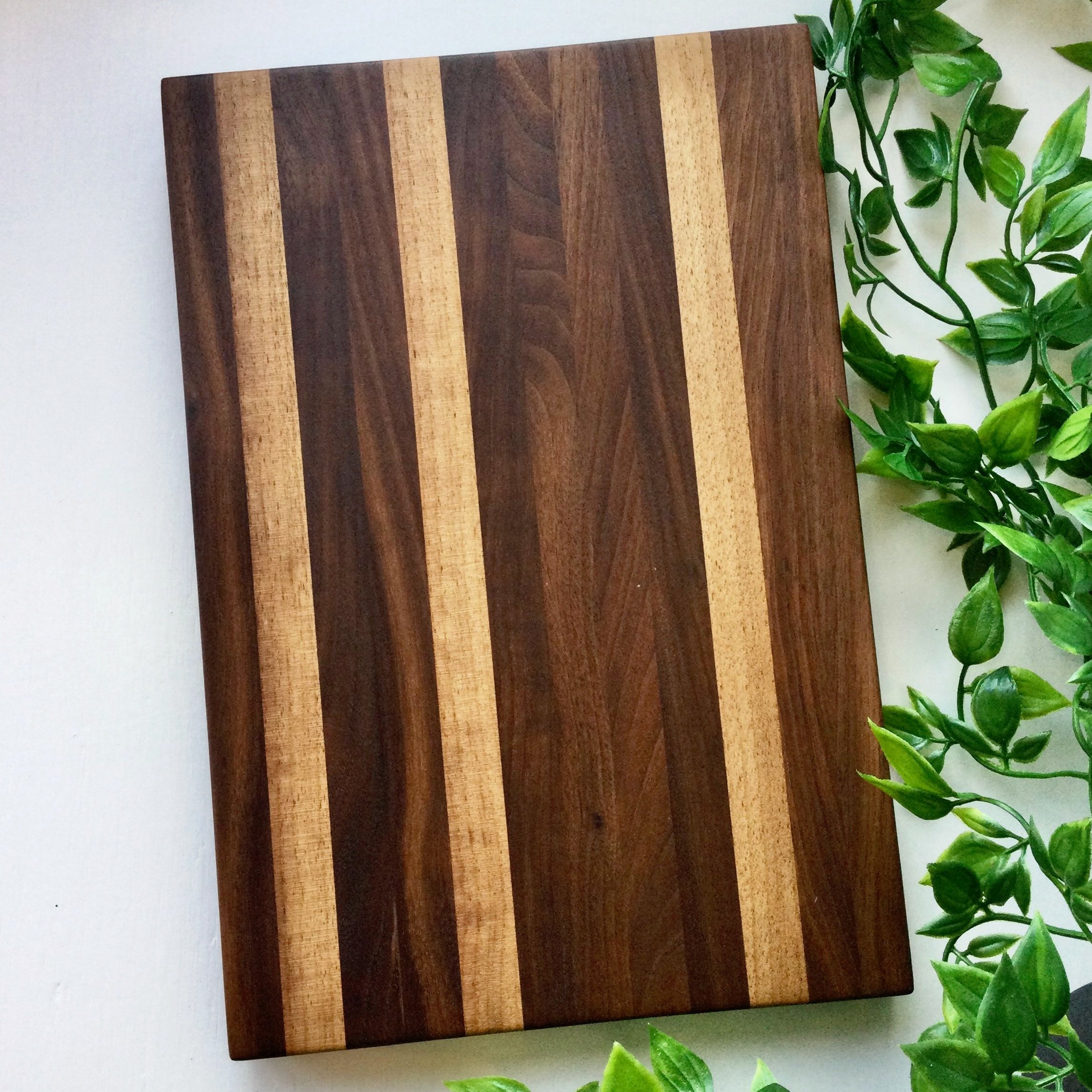How to Maintain A Wood Cutting Board
If you use a wood cutting board in your kitchen, it probably needs a little love!
As you prepare food and wash and dry your cutting board, the moisture levels in the wood can go up and down. Over time, the wood tends to dry out, fade in color, and feel rough to the touch. Knife marks and scratches might start to show more.
Even if your cutting board is just sitting out on display, it may start to dry out from sun exposure or dry air in your home.
But don’t worry! You can solve these issues quickly and easily with a bit of maintenance. And maintaining your wood cutting board is super easy!
You can watch this quick video below or keep reading to learn how to easily maintain a wood cutting board and make it last.
Walrus Oil Founder Dave Darr walks us through how to oil a wood cutting board using Walrus Oil Cutting Board Oil and a 800-grit sanding pad (all available at Scrappysworkshop.com)
Why is it important to maintain a wood cutting board?
Proper cutting board maintenance will preserve its longevity, reduce wood warping or cracking, and help keep your cutting board sanitary. It will also highlight the unique woodgrain patterns and color variations.
What products should you use to maintain your wood cutting board?
You can maintain your cutting board with just a few simple, inexpensive household items:
A gentle soap
A kitchen sponge or scrub brush
A lint-free cloth or dish towel
Cutting board oil
Cutting board wax
A Step-by-Step Guide: How to Maintain Your Wood Cutting Board
How to clean your wood cutting board
The first step to maintaining your wood cutting board is to ensure you clean it properly.
You can handwash your cutting board with warm water, any gentle soap, and a dish brush or sponge. Gently wash the board to remove any food scraps and residue. Rinse well.
We recommend cleaning your cutting board with our eco-friendly foaming liquid soap and a gentle scrubber like our bamboo & hemp kitchen brush.
Never put your wood cutting board in the dishwasher! That will cause it to dry out, crack, splinter, or even explode!
Here are some more tips about how to properly clean your wood cutting board.
How to dry your wood cutting board
Next, you want the cutting board to dry on all sides completely.
You can towel dry it with any dish towel, lint-free cloth or something super absorbent like a reusable Swedish dishcloth.
If you prefer to let the board air dry, make sure it gets airflow on all sides. Place it on a drying rack or stand it on its side instead of laying it flat on the counter.
How to treat your wood cutting board
Once the cutting board is completely dry, you’ll want to nourish it with a food-safe oil and wax.
Products like mineral oil and beeswax are considered the gold standard for cutting boards. They are readily available in many kitchen supply and home improvement stores or online retailers.
At Scrappy’s Workshop, we recommend Walrus Oil cutting board oil and Walrus Oil wood wax for cutting board maintenance (no walruses harmed).
These products are fantastic blends of food-safe coconut oil, pure mineral oil, beeswax, and vitamin E. They enhance, protect, and preserve the wood by nourishing and waterproofing it better than other products on the market.
If you want to avoid mineral oil or need a vegan option without beeswax, some blends are made of coconut oil and candelilla wax.
This quick visual shows how to oil and wax a wood cutting board using Walrus Oil (available at Scrappys Workshop)
The cutting board oil penetrates the wood, rejuvenating and moisturizing it, while the wood wax provides a protective barrier against moisture and daily wear and tear. Together, these products create a comprehensive system to maintain and enhance the beauty of your wood cutting board.
And to make things even better, their products are all made in small batches in the USA. They are a Climate Neutral Certified business that partners with 1% For the Planet and the National Forest Foundation to help give back to the environment with every product purchased. That’s why we proudly sell their products in our store!
You can learn more about Walrus Oil and their environmental mission on their website walrusoil.com.
How to apply cutting board oil
Once the board is dry, find a clean working surface where it is OK if you drip some oil.
Squeeze a small amount of Walrus Oil Cutting Board Oil directly on the board. Next, use a lint-free cloth or your hands to spread the oil evenly over the entire surface, ensuring that all sides and edges are covered. Add more oil as needed.
Once the board is completely covered, allow the oil to penetrate the wood for several hours or overnight. Walrus Oil recommends letting it soak for 12–24 hours.
After the oil has had time to penetrate, use a clean, lint-free cloth to buff the cutting board and remove any excess oil on the surface.
You can stop at this step, or you can protect the board further by applying a food-safe wood wax.
How to apply cutting board wax
This step is optional but helps seal in the cutting board oil and adds an extra layer of protection and waterproofing. If you use your cutting board often, it might be useful to wax it.
After wiping off any excess cutting board oil, apply a thin layer of Walrus Oil Wax for Wood Cutting Boards to further protect the surface.
Use a clean cloth to take a small amount of wax from the tin and evenly spread it across the board. This may take a little bit of elbow grease.
Allow the wax to dry for at least 15 minutes.
After the Wood Wax has had time to cure, gently buff off any excess with a clean, lint-free cloth.
How often should you oil your cutting board?
Luckily, you don’t have to oil or wax your cutting board after each use.
However, there is no set timeline. How often you should oil or wax your wood cutting board depends on how often you use it, how extensively you use it, and what climate you live in.
For example, if you are just slicing bread occasionally at home, you might be able to get away with just wiping your cutting board down between uses and therefore oiling it less often. On the other hand, if you are often butchering meat on your cutting board, you should give it a deep clean every use and therefore will need to oil it more frequently.
Also, you might have to oil your board more often during winter because the air is dry.
A good rule of thumb is to oil and wax your cutting board when it starts to feel a bit rough and dry, or when you notice the color start to fade and turn pale or gray-ish.
Can you refinish your wood cutting board?
Extremely worn cutting boards might need a bit of extra love. To get better results, deep knife marks and other wear and tear can typically be sanded down and removed before you treat it with oil and wax.
The great thing about natural oil and wax finishes is that they are easily removed. An extremely worn cutting board can be sanded and retreated with a nourishing oil and wax until it is restored to its original beauty. The thicker the cutting board, the more times it can be sanded and refinished.
If you have a wood cutting board that is very old or behind on maintenance, you can typically get it refinished.
Key takeaways: How to Make Your Wood Cutting Board Last
By following this easy maintenance routine using Walrus Oil Cutting Board Oil and Wood Wax, you can enjoy the benefits of a well-maintained wood cutting board.
Not only will your cutting board remain in pristine condition, but you can also have peace of mind knowing that it is food-safe and protected against moisture and wear.
Let us know if you have any questions about buying a wood cutting board or how to maintain your wood cutting board!










